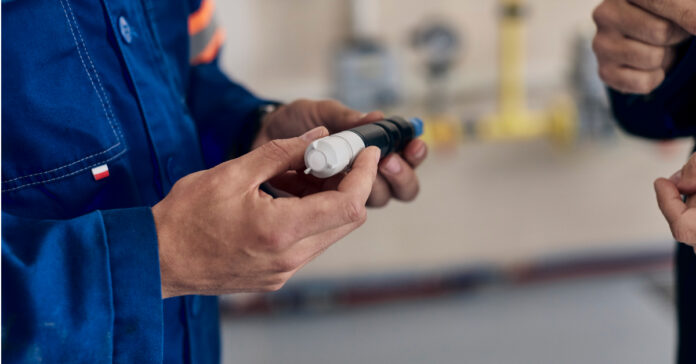WATER is a fundamental resource, essential for all life, and it plays a critical role across various industries and their processes. The quality of water is therefore vital, especially in the water and wastewater industry within Southern Africa. Effective disinfection methods are required to ensure safe levels of drinking water for human consumption and to ensure that wastewater treatments meet regulatory standards.
Endress+Hauser’s comprehensive range of disinfection sensors are designed to monitor and control disinfectant levels in water treatment processes. These sensors are equipped with the capability to detect and measure disinfectants such as chlorine, total chlorine, free chlorine, ozone and bromine. With disinfection processes set to become increasingly important, the correct sensor for a customer’s application is imperative.
Disinfection sensor technology offered by Endress+Hauser
Endress+Hauser disinfection sensors use Memosens 2.0 technology which means digital data is transmitted electronically, thus ensuring high accuracy and reliability. The raw, measured values are easily converted into digital signals which are then transferred to a transmitter.
The sensors are “plug-and-play”, therefore easily connected and commissioned. They are delivered pre-calibrated from the factory. Other features of the sensors are their quick response time ensuring efficient process control. Furthermore, the sensors store data, including calibration information which simplifies sensor maintenance and prolongs the calibration intervals.
With reagents not being required for operation, overall operating and maintenance costs are reduced. The sensors are also robust and reliable, designed to operate in harsh environments, including high humidity, extreme temperatures and under aggressive chemical conditions.
Applications in the water and wastewater industry
Municipal water systems
The Memosens CCS51E is an ideal sensor for any municipal water system application as it is designed to monitor chlorine levels in the drinking water. This ensures that the chlorine levels are within the stipulated regulatory requirements, thus ensuring the water is safe for human consumption.
By ensuring that this process is continuously monitored, any deviations are easily identified, thus ensuring that corrective actions can be taken as soon as possible.
Wastewater treatment plants
In wastewater treatment plants, there are strict regulatory requirements that need to be met while still ensuring optimal operational efficiency. Disinfection thus plays an important role in these processes. The Memosens CCS58E ozone sensor ensures that ozone levels in the wastewater treatment process are monitored. By ensuring accurate and real-time data is provided, the disinfectants are dosed optimally. With this continuous measurement, chemical usage can be reduced to minimise environmental impact.
Industrial water reuse
With an ever-increasing focus on sustainability, reusing industrial water has become a critical practice. Endress+Hauser disinfection sensors can be used in industrial water plants to monitor and control the quality of reused water. By ensuring there is accurate measurement of disinfectant levels, this ensures that reused water meets the required safety standards and helps to support initiatives for supporting sustainable water management practices.
Industrial plants are able to optimise their water reuse processes, reduce chemical usage and ensure the safety of their water supply. This is particularly important in industries such as food and beverage plants, where the quality of water is critical to product safety and quality.
As the demand for high quality water continues to grow, so does the need for effective disinfection processes. Endress+Hauser’s disinfection sensors can be relied upon to provide accurate, cost-effective solutions for monitoring disinfection levels. Endress+Hauser is committed to ensuring excellence in measurement processes and disinfection practices, thus ensuring the water and wastewater industries are able to meet their disinfection needs and to ensure a sustainable and safe water supply for future generations to come.
